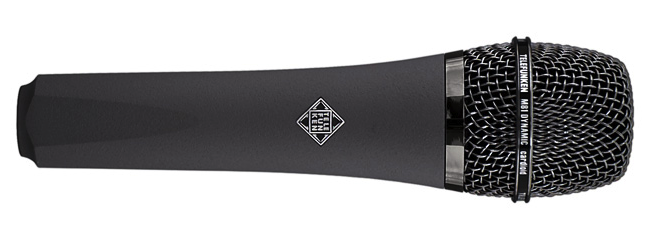
Last week American Blues Scene covered the basic workings of microphones. This week we will take a look at the four types of mics we mentioned earlier: crystal, dynamic, condenser and ribbon, exploring their properties and applications.
Crystal microphones fall far down on the list as far as general vocal reproduction goes and would normally not be considered useful in a performance situation. In the blues world, however, these microphones have quite an important place in the tone of amplified harmonica. These simple and cheap microphones were designed using the piezoelectric effect, which means that when a crystal is bent, it emits an electric current. In a crystal microphone, the diaphragm is placed over an armature. Think of the armature as a pair of tongs with the point at the diaphragm and the open end grasping the crystal. The armature holds onto the crystal at its outer edge and suspends it over a fulcrum placed on the bottom center of the crystal. When the diaphragm moves, it presses on the armature. The armature pushes down on the crystal, forcing it to bend over the fulcrum. Small strips of metal attached to the crystal transmit the signal to whatever amplification is desired. The crystal microphone is largely out of favor in vocal reproduction as it has a narrow sound range and produces a midrange-y, boxy tone. It is also prone to distortion when hit with loud sounds. However, these same drawbacks for vocal use became a boon to harmonica players when they realized that, hey, man, that sounds really cool! The crystal microphone is one of the favorite mics in use by many blues harp players to this day.
In a dynamic microphone the diaphragm is attached directly to the coil so that the coil itself moves back and forth past the magnet, disturbing the field and creating the voltage generation in the coil. Dynamic mics are ideal general-purpose mics. They are good for vocals and can also handle loud volume levels as when micing an amplifier or a loud acoustic instrument. They do not have built-in amplification, but they require no batteries or any sort of external power. Relatively inexpensive and rugged, these mics are a popular choice for many musicians.
Condenser microphones use a capacitor to convert acoustical energy into electrical energy. The capacitor has two plates in it, one is a light material that functions as the diaphragm, the other a back plate of heavier material. When sound strikes the front plate, it vibrates, and the distance between the two plates is changed. There is voltage between the two plates, and when this distance is shortened, capacitance increases and a charge occurs. The opposite occurs when the plates the distance is lengthened. Condenser mics require power from batteries or an external power source. Condenser mics are more sensitive than dynamic microphones, but they are not suited to high volumes, as their sensitivity makes them more susceptible to distortion. Higher up on the price scale, these mics do their job well, though they may not be the first choice for everyone.
A ribbon microphone is a type of dynamic microphone, but instead of using a diaphragm mounted to a coil as in most dynamic mics, the ribbon mic has a thin strip of aluminum suspended between two poles of a magnet. Ribbon mics react to the velocity of air particles rather than air pressure, as do the moving-coil dynamic mics. Ribbon microphones are very sensitive and much more delicate, most often relegated to studio use for recording purposes. Ribbon mics can carry a hefty price tag, and it is likely that only a more serious recording buff or commercial studio would be investigating their use.
The world of microphones is vast. There is far more information available even simply considering types of microphones not to mention different manufacturers and attendant gear. Now that you have a starting point, there’s no reason not to dig deeper and make sure your mic needs are satisfied.

